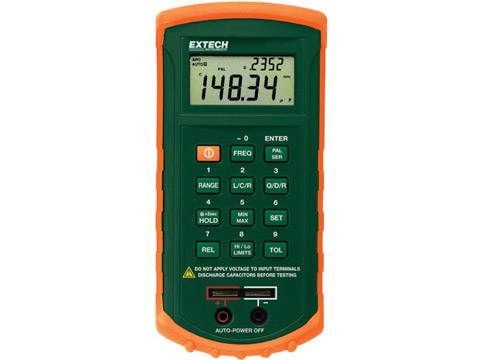LCR meter is used to measure the inductance (L), capacitance (C) and resistance (R) of an electronic component and measure a physical property known as impedance. Using an LCR meter is usually simple—but there are some setting choices you need to be aware of that will affect your measurements. In some cases, choosing the wrong settings can result in poor measurement accuracy. They used in laboratories for circuit testing and components calibration.
What are LCR meters
LCR meters, short for Inductance (L), Capacitance (C), and Resistance (R) meters, are specialized instruments designed to measure the electrical characteristics of passive electronic components. They provide valuable insights into the behavior of components such as resistors, capacitors, and inductors under different operating conditions.
These meters are widely used in electronics manufacturing, research and development, and quality control processes to ensure the integrity and reliability of electronic components and circuits. By accurately measuring parameters like impedance, phase angle, and admittance, LCR meters enable engineers and technicians to diagnose faults, characterize materials, and optimize designs.
How LCR Meters Work
LCR meters operate based on various measurement principles, including the bridge method, impedance analysis, and phase-sensitive detection. These methods involve applying an AC voltage or current to the component under test and analyzing the response to determine its electrical characteristics.
Typically, LCR meters consist of a signal generator, a detector, and signal processing circuitry. The signal generator generates the AC excitation signal, while the detector measures the voltage and current across the component. The meter then calculates impedance, phase angle, and other parameters using the measured values.
Applications of LCR Meters
LCR meters find extensive use across diverse industries, including electronics manufacturing, telecommunications, aerospace, and automotive. They are indispensable for:
Testing passive electronic components during production
Analyzing material properties such as dielectric constant and conductivity
Characterizing impedance in RF circuits and antennas
Assessing the performance of energy storage devices like batteries and capacitors
View our LCR Meter Catalog

Advantages of LCR Meters
Measure the impedance of a circuit and help you troubleshoot or characterize existing circuits. • Identify unmarked components and sort components into bins with specified tolerances. • Battery-operated, handheld LCR meters are convenient to carry into the field for testing away from the bench. • Measure AC characteristics of a component as a function of frequency and amplitude to help you predict the AC behavior in a circuit. • Characterize motors1 by inductance measurements and inductance as a function of rotor angle. • Identify the coil leads of an unmarked relay by measuring the inductance. • Select components for passive filters, then measure the filter's impedance at various frequencies. • Measure components in-circuit. In particular, find capacitors with high ESR. • Estimate the winding ratio of a transformer via inductance measurements. • Measure the Q of coils. Sometimes a lossy inductor is desired and the LCR meter can tell you if you've made it correctly. • If you maintain equipment, measure the equipments' characteristics with the LCR meter and write the values down for future reference.